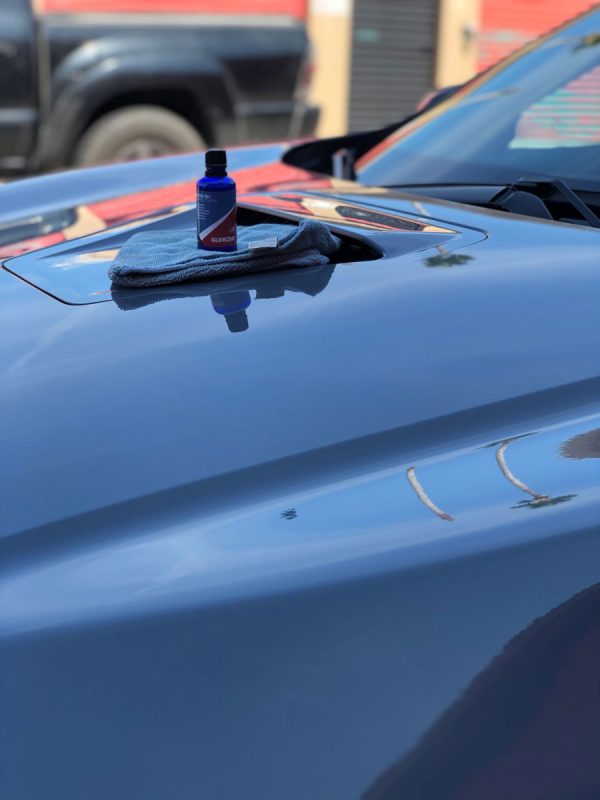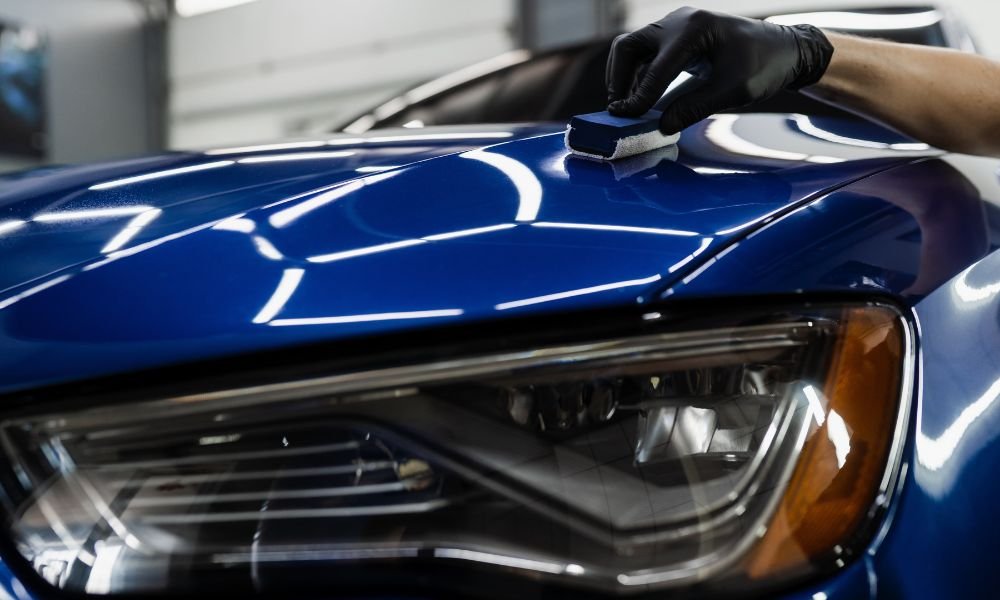Ceramic Coating: The Secret to Maintaining Your Auto Looking New
Ceramic Coating: The Secret to Maintaining Your Auto Looking New
Blog Article
The Value of Ceramic Coating: Securing Your Cars and truck's Outside With Accuracy
In an age where maintaining the functional and aesthetic stability of your lorry is critical, ceramic layer arises as a crucial solution. With its unique bonding homes, ceramic layer provides a degree of protection that much surpasses traditional waxing techniques.
Advantages of Ceramic Coating
When it comes to maintaining a vehicle's visual charm, ceramic layer uses considerable advantages. This sophisticated protective layer gives a sturdy shield against ecological impurities, including dirt, gunk, and damaging UV rays. By forming a semi-permanent bond with the vehicle's paint, ceramic coverings efficiently prevent oxidation and fading, making sure that the car keeps a shiny, showroom-like surface for an extended duration. This not only enhances the vehicle's visual appeal yet also adds to its long-lasting worth.
In enhancement to its protective top qualities, ceramic coating supplies impressive hydrophobic buildings, triggering water and various other fluids to grain off effortlessly. This feature simplifies the cleaning process, as dust and particles are less likely to comply with the surface, minimizing the frequency and effort needed for maintenance. Moreover, the finish's resistance to chemical discolorations from acidic contaminants like bird droppings and tree sap is an additional significant advantage, minimizing possible paint damages.
Ceramic finishes also enhance scrape resistance, giving a layer that can take in small abrasions and swirl marks. This attribute is particularly advantageous in preserving a pristine surface area, decreasing the chance of visible flaws and preserving the integrity of the car's paintwork over time.

Just How Ceramic Finish Works
Recognizing the technicians behind ceramic layer reveals its effectiveness as a safety option for vehicles. Ceramic finishings are basically fluid polymer applications that chemically bond with a cars and truck's factory paint, producing a safety layer.
Application of ceramic finish involves a thorough process. Originally, the lorry's surface area must be completely cleaned up and decontaminated to guarantee optimal adhesion. Once applied, the fluid polymer develops a semi-permanent bond with the paint, setting right into a transparent, durable guard. This shield improves the automobile's gloss and hydrophobic residential properties, promoting less complicated cleaning by triggering water and impurities to bead and slide off effortlessly.
In addition, the covering's molecular structure provides resistance to small scrapes and chemical stains. Unlike waxes or sealers that sit on top of the paint, ceramic layers integrate with the surface area, offering long-lasting security. This integration is fundamental to its performance, ensuring the car's finish remains beautiful for several years.
Contrasting Ceramic Coating to Alternatives
In the world of automotive protection, ceramic covering stands as a powerful choice when compared to conventional options such as sealants and waxes. While waxes offer a short-term lustrous finish, typically lasting only a few weeks to months, ceramic coatings provide a longer-lasting remedy, often sustaining for several years. This durability is attributed to the chemical bonding that occurs when ceramic coatings are applied, creating a strong layer that is immune to environmental dangers.
Contrastingly, sealants, although more resistant than waxes, still disappoint the robust defense supplied by ceramic finishes. Sealers can usually last for approximately a year, supplying a synthetic shield against certain components. Nonetheless, they do not have the exceptional hydrophobic buildings and UV defense that ceramic finishings provide.
Additionally, ceramic finishes provide improved scrape resistance, which neither waxes neither sealants can successfully match (ceramic coating). This is especially valuable in preserving a vehicle's beautiful look. Furthermore, ceramic finishings simplify maintenance initiatives by decreasing the adherence of more dust and gunk, therefore assisting in less complicated cleaning. In recap, while conventional waxes and sealers offer fundamental defense, ceramic coverings provide a comprehensive, long-lasting remedy that significantly protects the lorry and enhances's exterior surface.
Application Refine Explained
Using ceramic coating to a vehicle needs a precise process to guarantee ideal outcomes and longevity. The initial step involves thoroughly cleaning the vehicle's surface to remove dirt, oil, and previous look at this web-site waxes. This is crucial for guaranteeing the finishing adheres correctly. A pH-neutral shampoo and a clay bar treatment are often made use of to attain an immaculate surface area. When cleaned, the car is dried and brightened to remove any type of flaws, as any type of existing swirls or scratches can become more obvious after the finish is used.
Complying with surface preparation, the application of the ceramic covering begins. The finish is commonly applied in a climate-controlled setting to avoid dust fragments from picking the fresh cleaned up surface area. Utilizing an applicator pad, the ceramic coating is used in small sections to guarantee also coverage. It is vital to comply with the manufacturer's standards concerning the proper curing time and application density.
After application, the coating needs a certain healing period, during which the automobile needs to be protected from water and contaminants. This treating process can differ relying on the item but typically ranges from 24 to two days. Inevitably, this thorough process is critical in accomplishing a glossy and resistant finish.
Maintenance Tips for Durability
To maintain the longevity of a ceramic coating, adherence to a disciplined upkeep regimen is essential. Stay clear of automated cars and truck washes, as their harsh brushes can compromise the layer's honesty.
Post-wash, drying the vehicle with a tidy microfiber towel stops water areas that may weaken the finish in time. Additionally, use a ceramic finish booster every few months. These boosters reinforce the hydrophobic homes and improve the finishing's protective capacities, guaranteeing it remains reliable against impurities.
Remember that parking places play an important role in upkeep. ceramic coating. Whenever possible, park in shaded locations to lessen UV exposure, which can progressively compromise the finishing. For long-term storage space, think about using an automobile cover for included protection versus environmental elements
Verdict
In final thought, ceramic look these up layer offers as a crucial protective layer for car exteriors, providing resilient protection versus ecological aspects such as crud, dust, and uv rays. Recognizing the application procedure and adhering to maintenance recommendations are vital for maximizing the longevity and effectiveness of ceramic coating.
When it comes to preserving a cars and truck's visual allure, ceramic layer provides considerable benefits. By developing a semi-permanent bond with the lorry's paint, ceramic finishings efficiently avoid oxidation and fading, making sure that the auto maintains a glossy, showroom-like finish for an extended period. Ceramic coverings are essentially fluid polymer applications that chemically bond with an auto's manufacturing facility paint, producing a protective layer. In summary, while typical waxes and sealants provide standard security, ceramic finishings present a thorough, lasting option that significantly boosts and maintains the lorry's exterior coating.

Report this page